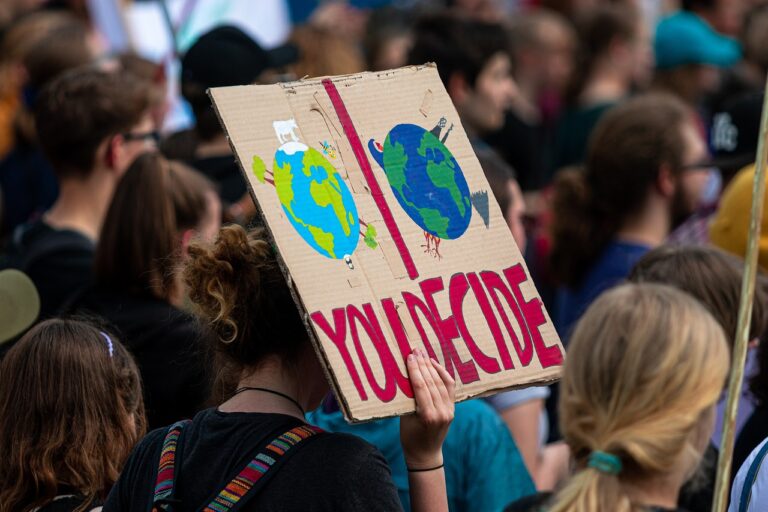Fridays for Future is a global movement of young people fighting climate change. Since it first started in December 2018, the movement has grown to include hundreds of thousands of students across Europe, Australia, and the U.S., who have skipped school to demand meaningful climate action from world leaders. Fridays for Future began when 15-year-old Swedish activist Greta Thunberg decided to protest outside parliament every Friday until Sweden took steps toward reducing carbon emissions.
Table of Contents
Fridays for Future started as a one-person movement and became global
Greta Thunberg told The New York Times that her first time participating in the school strike was “really scary.” But she went through with it, and soon other students joined her and continued holding strikes until their demands were met: they wanted to see climate change action from their government leaders.
Now, Fridays for Future is an international phenomenon with chapters across Europe and in various countries worldwide, including the United States. And while there are differences between how each group operates (in Germany, members of Fridays For Future collect signatures instead of picketing outside schools), they all work toward similar goals: to get people talking about climate change and encourage politicians to take action against global warming before it’s too late.
Young people worldwide have joined the cause
Even though the movement is focused on Fridays, students in Germany, Austria, Italy, Switzerland, the Netherlands, and Belgium are striking on other days of the week as well. In Britain and Norway, some schools have joined forces with teachers to organize walkouts that don’t require parental permission.
Greta Thunberg has been inspiring young people around the world — including those who participate in Fridays for Future — to speak up about climate change. She’s also helping them get politically engaged: The Swedish student spoke at the COP24, where she urged world leaders to “listen to us” when it comes to environmental policymaking.
With public demonstrations and political pressure, students are fighting for climate action now
Thousands of students are walking out of class each Friday to demand climate action.
What started as a small group of schoolchildren has grown into a global movement with hundreds of thousands of students striking across the globe. The movement is not just about finding solutions to stop climate change, it’s also about ensuring that future generations have access to good education and jobs.
Some example of Friday for Future activists are:
- you can find them striking in the streets: in April, thousands of students participated in a global day of action for climate justice to protest the inaction of politicians and demand change;
- they’re pressuring politicians: in Australia, more than 300 school students staged a walkout at Parliament House in Canberra to pressure Prime Minister Scott Morrison to take action on climate change. Meanwhile, U.S.-based youth activists have launched a campaign called “Our Future Our Choice” to confront candidates from both major parties about their stances on climate issues during the presidential election cycle;
- they’re setting an example for other young people around the world who want to make their voices heard about this issue in an era when misinformation and disinformation are rampant online and political leaders are often inaccessible or unresponsive.
What Fridays for Future movement achieved
So far, Fridays for Future has achieved many things:
- it has helped raise climate change awareness through social media campaigns, protests, and other activities;
- it has made people more aware that climate change affects millions of young people daily;
- it has shown people how serious this issue is and that we must take action now to save our planet from destruction;
- it has made it clear that young people are ready for change. They have grown up with technology and know what it means when we say “green” or “sustainable” products;
- it has helped create a worldwide movement for climate justice.
Read also: Greenwashing: what is it, how to spot it and 3 practical examples












